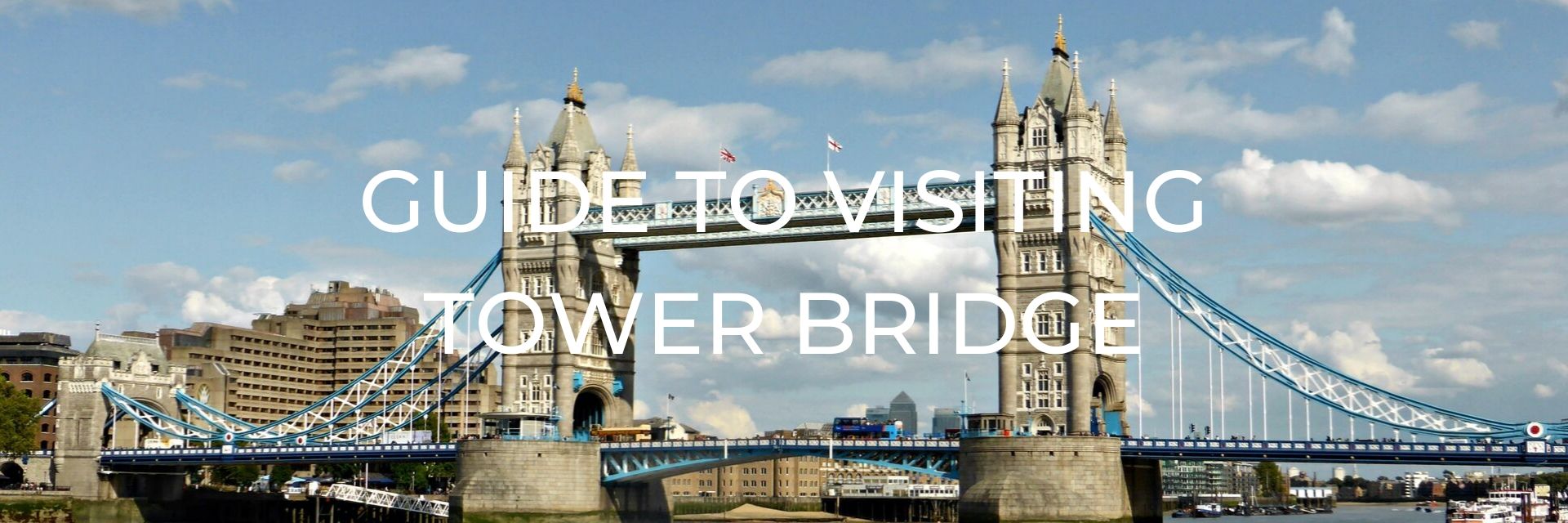
Back in the late 18th and early 19th centuries, London saw ten new bridges built along the Thames to help cope with the increasing trade and traffic that came with the growing city. However, east of London Bridge there wasn’t a bridge despite the population that had grown to over a million by the late 19th century. One of the reasons a bridge hadn’t been built by this time was because the shipping industry feared business would decline if ships couldn’t get further up the river. By that late 1800s though it couldn’t be put off any longer so a call went out for design ideas, which ultimately led to London’s beautiful Tower Bridge.
In 1876 a competition was opened for a new design but it wasn’t until 1884 that a design was proposed that provided the solution the city needed. The winning design, from the over 50 designs submitted, was created by architect Sir Horace Jones, who unfortunately died shortly after in 1887 and didn’t get to see his design completed. The task was passed to his assistant George Daniel Stevenson, who had a tremendous passion for the Victorian Gothic style, to see the eight years of construction to a finish.
Want to save this for later? Click the Pinterest button on the left for a pinnable image!
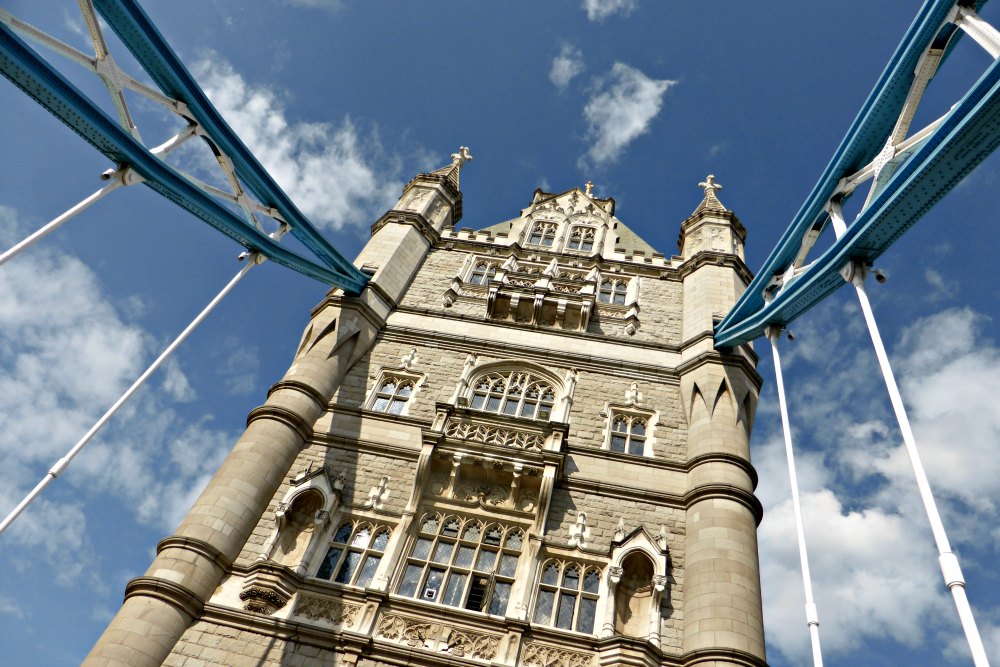
This post may contain affiliate links. Please read our full disclosure policy here.
Perhaps second only to Big Ben as London’s most recognizable symbol, Tower Bridge doesn’t disappoint both with its beautiful architectural design, and its revolutionary (at the time) bascule mechanism which can clear the way for oncoming ships in just three minutes.
It is made of steel and then overlaid with Portland stone in a Gothic style that was very popular in the late 1800s. Before 1977 the bridge was brown until it was painted red, white, and blue to celebrate the Queen’s Jubilee. Today its towers with mock medieval turrets and blue suspension struts still make it as enthralling to look at (and photograph!) as ever. Over the years since its construction Tower Bridge has seen a few changes such as the closing of the upper walkways in 1910 to pedestrians (because they weren’t being used), to the conversion to oil and electricity to power the raising and lowering of the bridge.
Linking the Tower of London with the South Bank promenade, Tower Bridge has been a tourist attraction since 1982 when it was opened to the public. It is now one of the most visited attractions in London and continues to be a working bridge, both for vehicular traffic and pedestrians with thousands crossing it daily.
HIGHLIGHTS OF TOWER BRIDGE
There is more to seeing Tower Bridge that just walking across or taking photos from afar. The Tower Bridge Exhibition is actually a family-friendly tour that is like visiting two attractions in one!
The first part satisfies those that have ever wished to go up in the famous neo-Gothic towers and cross the high-level observation walkways, that used to be used for pedestrian crossings. The second part of the exhibit takes visitors into the engine rooms to learn about the steam-driven machinery that impressed the world in 1894 (and still does!).
Here are some of the highlights to get you started when planning your trip to Tower Bridge.
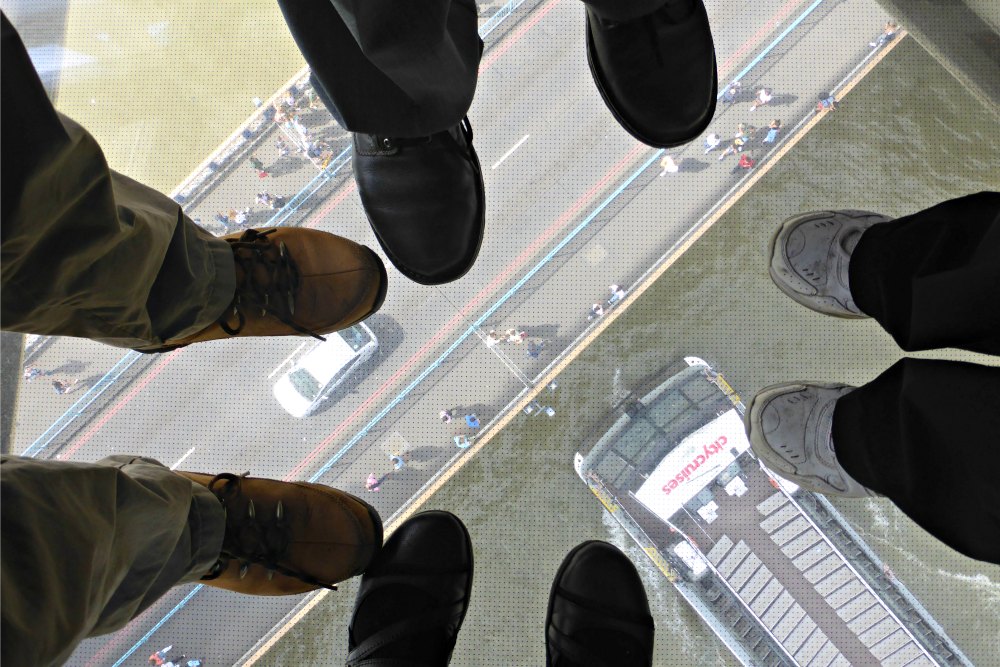
VIEWS FROM THE WALKWAYS & THE GLASS FLOOR
In 2014 a glass floor was installed in a portion of each of the upper walkways so visitors can now look directly down to the road and river 42 m (138 ft) below their feet, in addition to the amazing panoramic views of London from the walkways.
Although the walkways are enclosed there are lots of little windows that can be opened that are plenty big enough to get your camera through so you can take great photos without the glass being in the way. From the east walkway, you’ll be able to see the modern superstructures of the Docklands, and from the west walkway, you’ll see the Tower of London, St. Paul’s Cathedral, the Monument, City Hall, and HMS Belfast among many things.
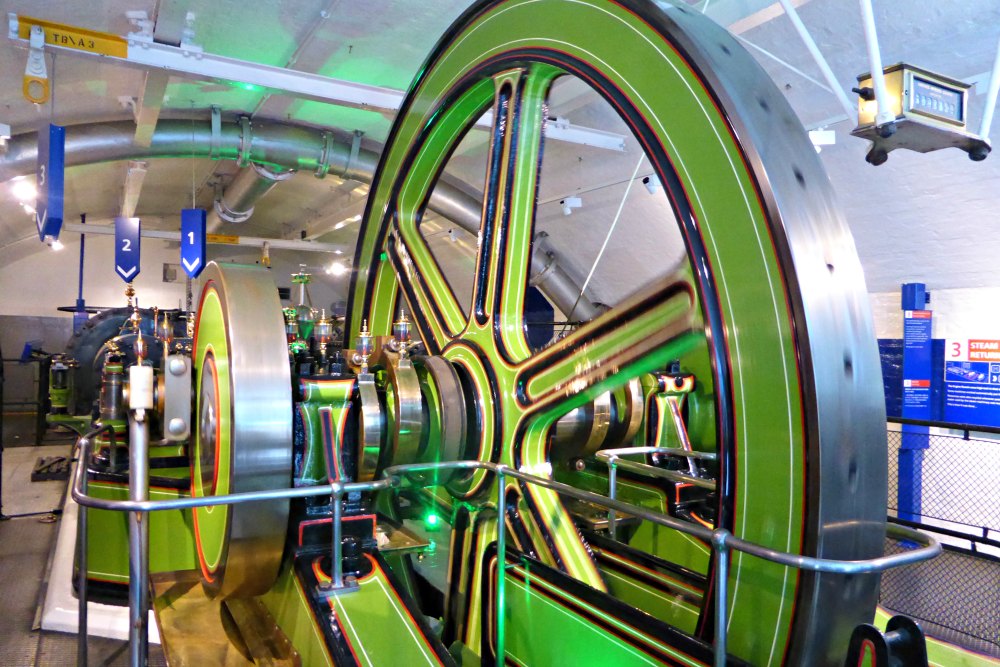
THE VICTORIAN ENGINE ROOMS
The Victorian Engine Rooms show the original pumping engines and boilers once used to raise and lower the bridge, along with information about how the whole process worked. The original bascule-raising equipment, which was the largest use of hydraulic power at the time, remains in excellent condition despite being retired in 1976 when it was replaced by electricity. The raising of the bridge is now controlled by joystick from a cabin across the road from the entrance.
The entrance to this part of the exhibit can be found by following the blue guideline painted on the sidewalk when you exit the south tower (after visiting the walkways).
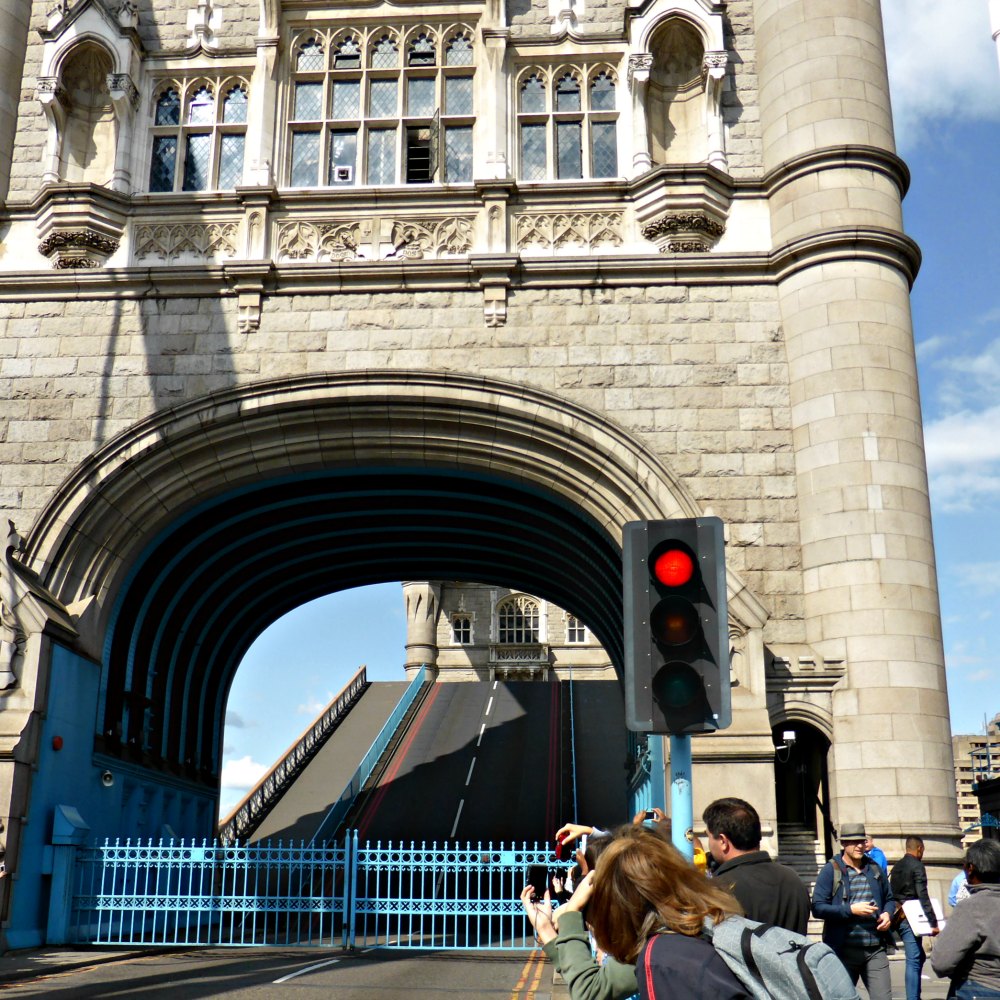
WATCH TOWER BRIDGE RAISE
Although London’s days as a thriving port are long over, Tower Bridge still does its thing with its enormous bascules – the 1200 ton “arms” – lifting around 1000 times per year, with as many as 10 lifts per day in the busy summer season to allow large ships through.
You may get lucky, as my son and I did on one visit, and see the bridge in action or you could check out the schedule for lift times online to see if the bridge will be raised during your visit so you can plan to see it. Ships only need to request a lift time 24 hours in advance so if no lifts are scheduled when you’re making your plans you could still check back while you’re in London and see if one has been added to the schedule.
For a full 360-degree panoramic video of Tower Bridge being raised, check out the free “Raise Tower Bridge” app for Android and iOs. This app needs to be used while on-site by pointing your device at the floor-mats in the walkways which starts the bridge lift experience.
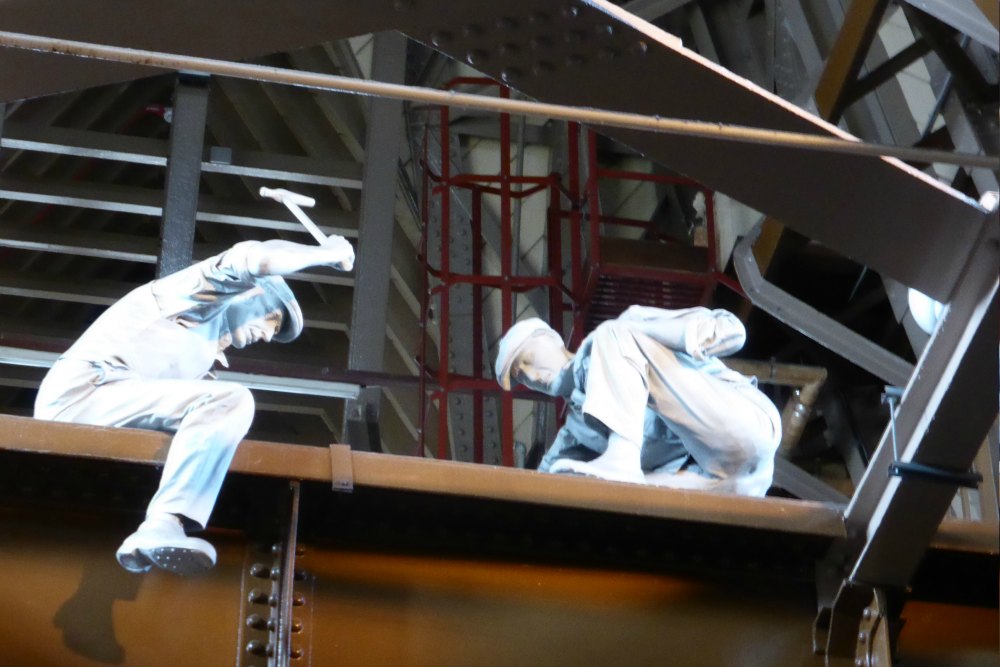
GUIDED TOURS
For visitors that would like to dig a little deeper to learn the stories behind Tower Bridge’s iconic structure and some of the 432 people that built it, there are guided tours available.
- Personal Guided Tour: This tour combines key facts with anecdotes and brings the bridge to life.
- Personal Guided Tour with BSL: This tour is the same as the Personal Guided Tour with a British Sign Language interpreter.
- Behind-the-Scenes Guided Tour: Takes guests on an extended look around the bridge and engine rooms into areas that are out of bounds on regular visits. It is available on Saturday and Sunday from November to February for those 14 years and older.
MOBILE APPS TO ENHANCE YOUR VISIT
In addition to the “Raise Tower Bridge” app mentioned above, here are two more apps you may be interested in for your visit:
- For those travelling with children, the Tower Bridge Family Trail app is worth downloading before your visit. It has interactive activities for the whole family to add another dimension to your visit.
- You can transform your mobile phone into a time machine to relive incredible moments in the history of Tower Bridge and London. Simply download the Virtual Reality app and purchase a headset on-site (£5.00) to complete the experience.
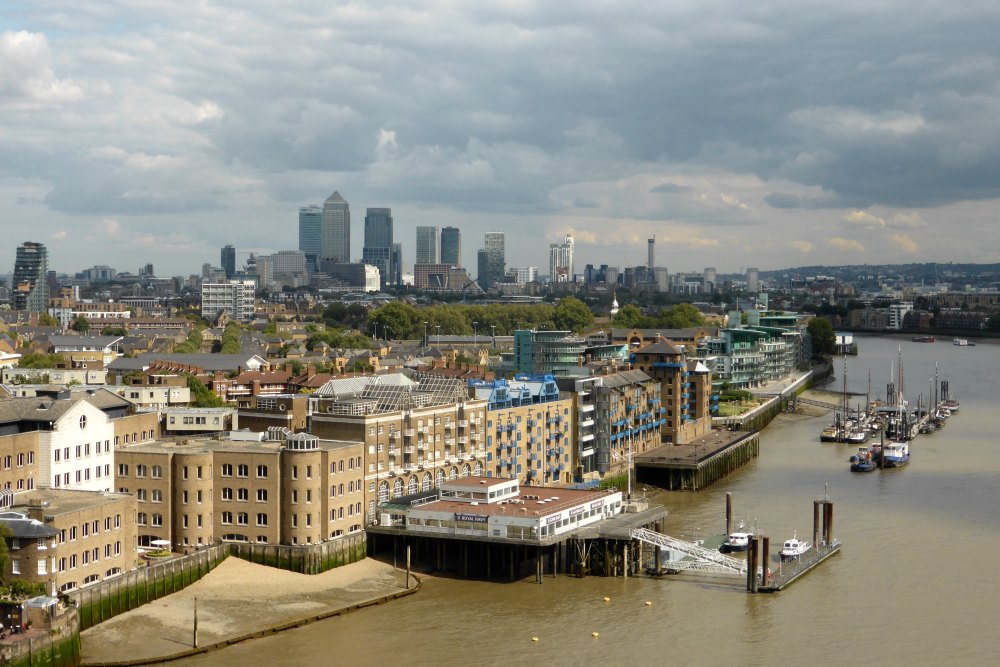
PLAN YOUR VISIT TO TOWER BRIDGE
Information last updated September 2019
HOW TO GET THERE
The address for Tower Bridge is: Tower Bridge Road, London, SE1 2UP
The main entrance and ticket office are located at the northwest tower of the bridge. This is the tower on the same side of the river as the Tower of London. The entrance for the Victorian Engine Rooms is located on the opposite side of the bridge (south side) at river level. Follow the painted blue line on the ground to get between the two parts of the attraction.
The closest tube station is Tower Hill (District and Circle Lines) which is about an 8-minute walk away. Other nearby options are Fenchurch Street (National Rail) and Tower Gateway (DLR line).
Buses on routes 15, 42, 78, 100, and 343all stop near Tower Bridge.
Tower Bridge is also on many of the Hop-On/Hop-Off bus tour routes including the Yellow Route with the Original Tour (which we personally recommend).
There is no on-site parking and parking in the general area is limited as the bridge is in the Congestion Charge Zone. The nearest public parking is at Tower Hill Coach and Car Park at 50 Lower Thames Street, London, EC3R 6DT which is less than an 8-minute walk to Tower Bridge and is fully accessible.
You can also travel to (and under!) Tower Bridge by boat! Tower Pier is served by riverboats travelling from Westminster and North Greenwich Pier.
Options for travelling by boat include the River Bus (run by Transport for London) which work on the same payment system as the tube or City Cruises. We’ve used both services on multiple occasions and like that they offer a different view of the city and a neat way to get between places.
HELPFUL LINKS:
- If you need an app that will navigate you around whether walking, driving or using public transport and even works offline then click for a guide about how to use Here WeGo.
- The Tube Map/London Underground App (Android and Apple) is very useful for getting around London. It's free, has a route planner, and works offline.
- Transport for London website's "Plan Your Journey" tool will give you results for trip time on the Tube, bus, or walking. Note the walking time as sometimes it is the quickest, easiest, option!
OPENING HOURS
Opening hours are 09:30 – 17:00 (last admission).
Tower Bridge is closed on December 24-26th and open from 10:00 on January 1.
To Note: On the third Saturday of every month, Tower Bridge opens at 10:00 to facilitate Autism Friendly Early Opening sessions.
Especially during peak times of the year, allow enough time to validate your online booking (or purchase tickets), the security checks, and elevator access to the Walkways.
Entry into the Walkways is not guaranteed for a specific time at peak times or during Bridge lifts.
Leave yourself about 1.5-2 hours for a visit that includes both the walkways and the Victorian Engine Rooms.
TIP: To avoid a queue and crowds as much as possible, try to arrive at Tower Bridge as soon as it opens or just before last admission.
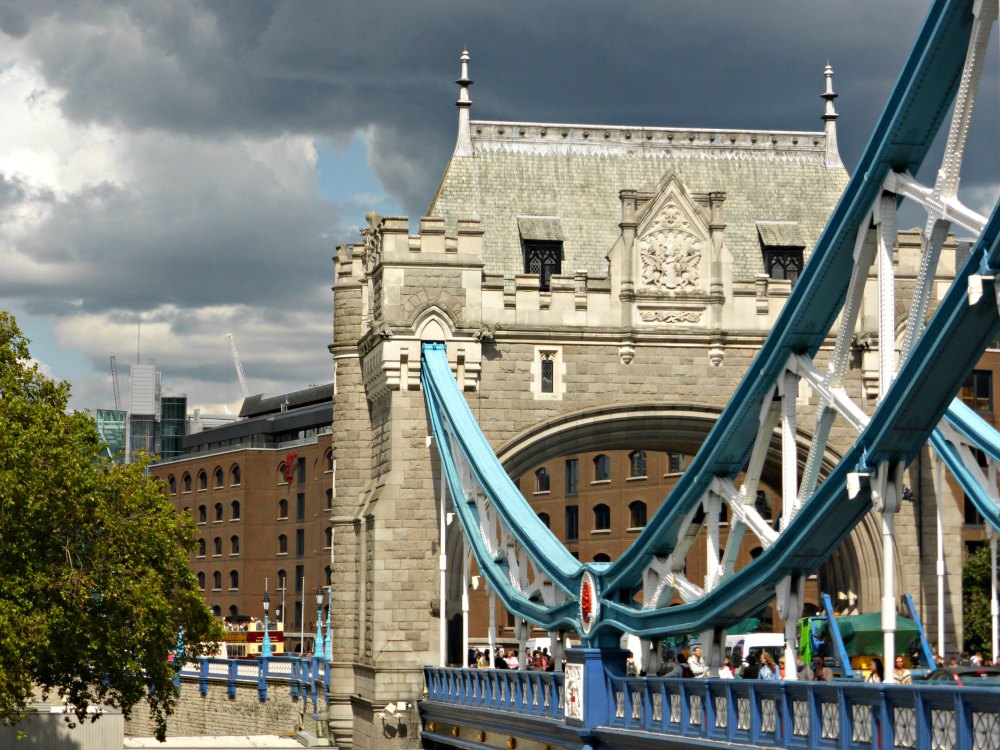
HOW TO BUY TICKETS & SAVE MONEY ON ADMISSION
Admission prices for tickets purchased at Tower Bridge ticket office are £9.80 adults, £4.20 children (age 5-15), £6.80 for students, disable visitors, and adults over 60 years, and £3.00 for disabled visitors age 5-15. Children under 5 and companion tickets for disabled visitors are free (but you still need to reserve a ticket for them online).
If you purchase tickets in advance online you will receive a discount and prices are as follows:
£8.80 adults, £3.80 children (age 5-15), £6.10 for students, disabled visitors, and adults over 60 years, and £2.70 for disabled visitors age 5-15. Children under 5 and companion tickets for disabled visitors are free (but you still need to reserve a ticket for them online).
Please Note: Purchasing tickets online does not give a “fast track” entry to Tower Bridge. All visitors must queue to have their ticket validated and go through the security check. On our most recent visit in August 2019 (which is during peak times), it was about a 25-minute wait in the line.
Online tickets must be purchased at least 24 hours in advance and are valid for one year from date of purchase.
There are also family rates available as follows: 1 adult +2 children for £15.30; 2 adults + 1 child for £20.00; 2 adults + 2 children for £22.00; 2 adults + 3 children for £24.50; and 2 adults + 4 children for £27.00
If you are planning to visit the Monument also you can purchase a combination ticket for Tower Bridge + the Monument for £12.00 adults, £5.50 for children, and £8.20 for concessions. The combo ticket is valid for 7 days from date of purchase and permits one visit per attraction.
If you live in Southwark, Tower Hamlets or the City of London you are eligible for a “Community Ticket” that is only £1. You’ll need to bring proof of address and a form of photo ID when you visit to receive this special price. Complete terms and conditions for this can be found here.
If you are travelling by train on the National Rail you may also be eligible for great savings with the 2 for 1 London offer by Days Out Guide. This offer is not available all the time but it is well worth a quick look on their website to see if it’s available for when you’d like to visit. Tower Bridge is also included on the London Pass as another money-saving option.
ACCESSIBILITY
Both the bridge itself and the Victorian Engine Rooms are fully accessible with elevators to take visitors to all levels in the towers and the Engine Rooms.
Please find their complete Accessibility Guide here which includes detailed information for visitors.
IS TOWER BRIDGE WORTH THE VISIT?
Tower Bridge is one of the most iconic sites in London and many tourists will be content with the myriad of views you can get of the bridge from the riverbank or by walking or riding across it, or even taking a river bus under it.
But there is much more to the bridge than its iconic image and we found the tour provided valuable insights into the construction and operation of the bridge. Seeing the inside of the towers where you witness the metal structure (the stonework is just a façade) and finally going down the beautiful yet functional Victorian engine rooms.
You will also enjoy great views up and down the river and across London from the walkways, as well as down through the glass floor. So, for the entry price, we think this is one of the better value attractions in London.
See what others think of this attraction on Trip Advisor.
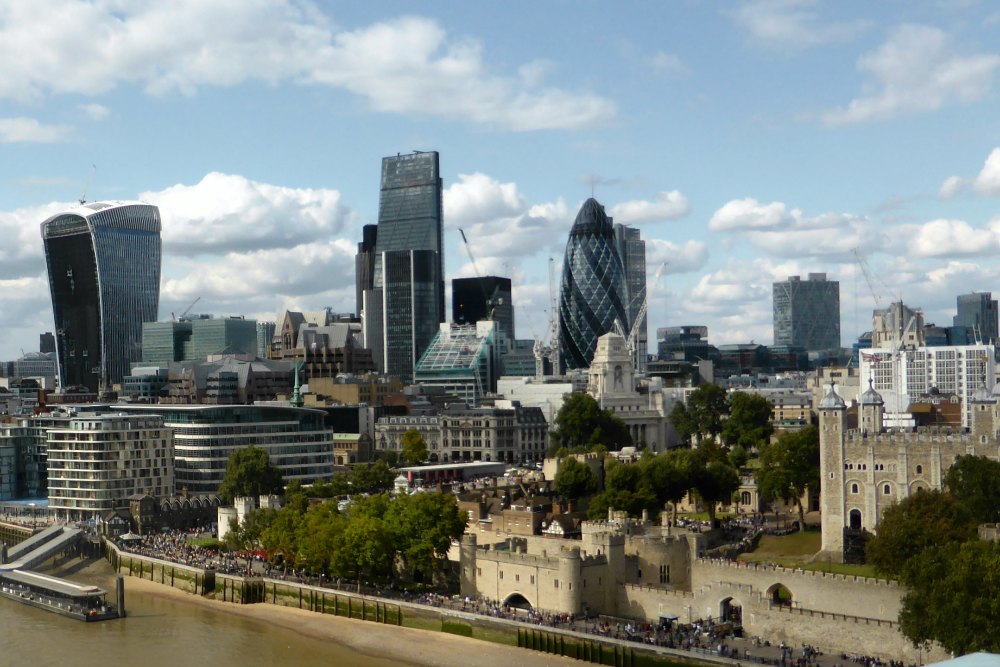
ADD TO YOUR ITINERARY
“When a man is tired of London, he is tired of life” said Samuel Johnson, so it’s no surprise that there are a plethora of things to do in the UK’s capital city. Here are a few choice selections to whet your appetite.
IN THE AREA
- Purchase the combination ticket for Tower Bridge and the Monument to the Great Fire and enjoy more great views of London from the top of the Monument (after you’ve climbed the 311 stairs!) and learn about the Great Fire of 1666.
- Step further back in time to the 11th century and visit the Tower of London to see the Crown Jewels, the White Tower, and take a tour by one of the Yeoman Warders.
-
Take a double-decker bus from the Tower Hill stop to the Monument stop (line 15) on one of the old Routemaster buses. These are becoming quite rare so take your ride on one while they are still available.
- See a portion of the old Roman Wall, that once enclosed the city, at the Tower Hill tube stop.
OTHER BRIDGES IN LONDON
- Start your day with a walk across Millennium Bridge, also known as “the Wobbly Bridge”, for great views of St. Paul’s Cathedral and up and down the Thames.
- Stroll across Westminster Bridge to see Big Ben and the Houses of Parliament on one side of the river and the London Eye on the other.
- View unique architectural design in the Rolling Bridge – a pedestrian bridge at the Grand Union Canal at Paddington Basin that rolls up to allow boats through. If your visit doesn’t allow you to see it open or close you can see it in action on this YouTube video.
- And of course… London Bridge. This is one of many bridges in a long line that have spanned the Thames in that area. Thankfully heads of traitors aren’t still lining the bridge on spikes as they used to do!
Want to save this for later? Click the Pinterest button on the left for a pinnable image!
RESOURCES | PLAN YOUR TRIP TO LONDON
To book flights, rental cars, accommodations, and activities for your trip, please check out our recommended travel providers, favourite apps and websites.
These are a few tours that include Tower Bridge that we would recommend for your trip to London.
Some of the links in the post above are affiliate links. This means if you click on the link and purchase the item, we will receive an affiliate commission but this does not affect the price to you. Please read our full disclosure policy here.
